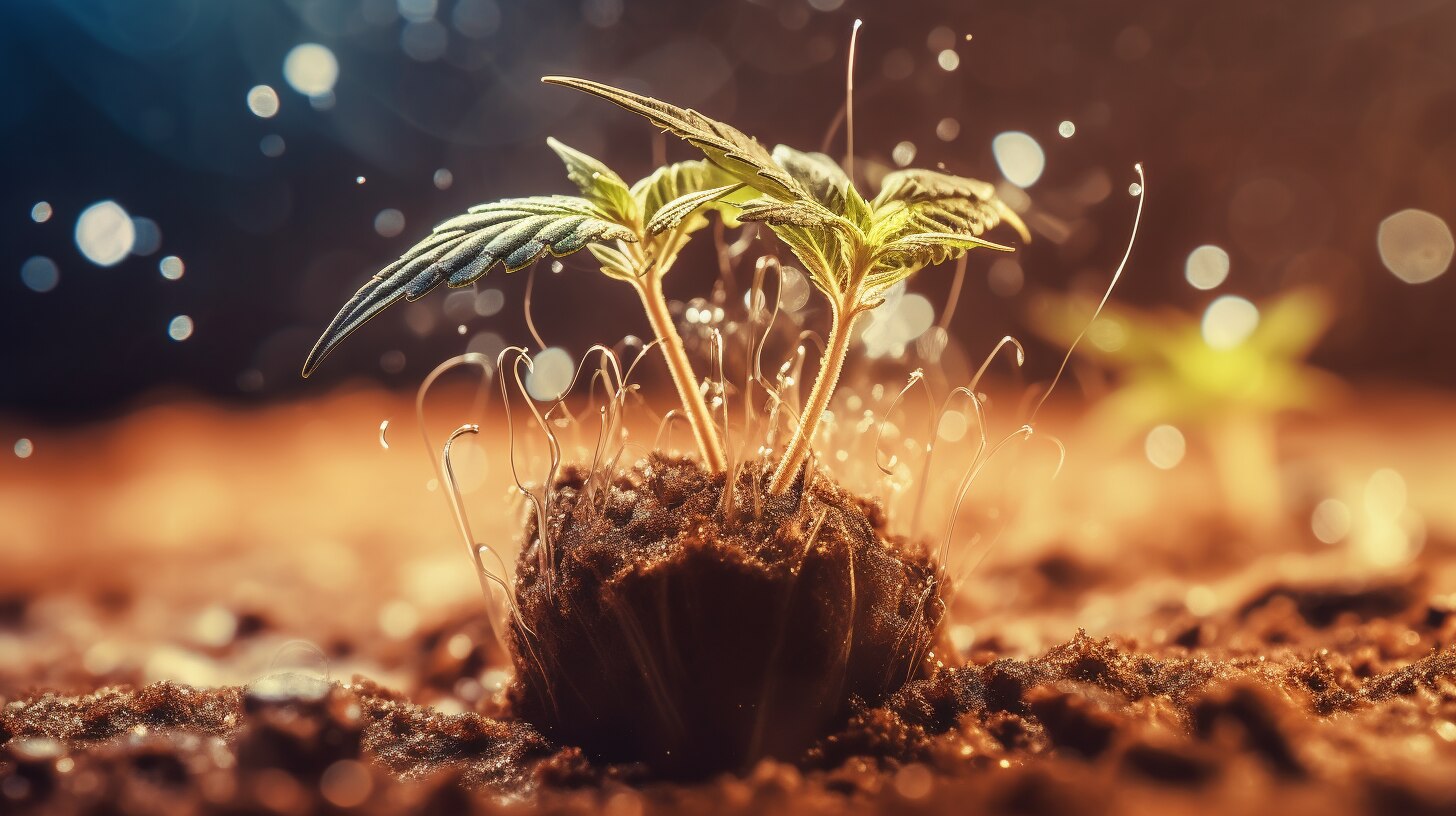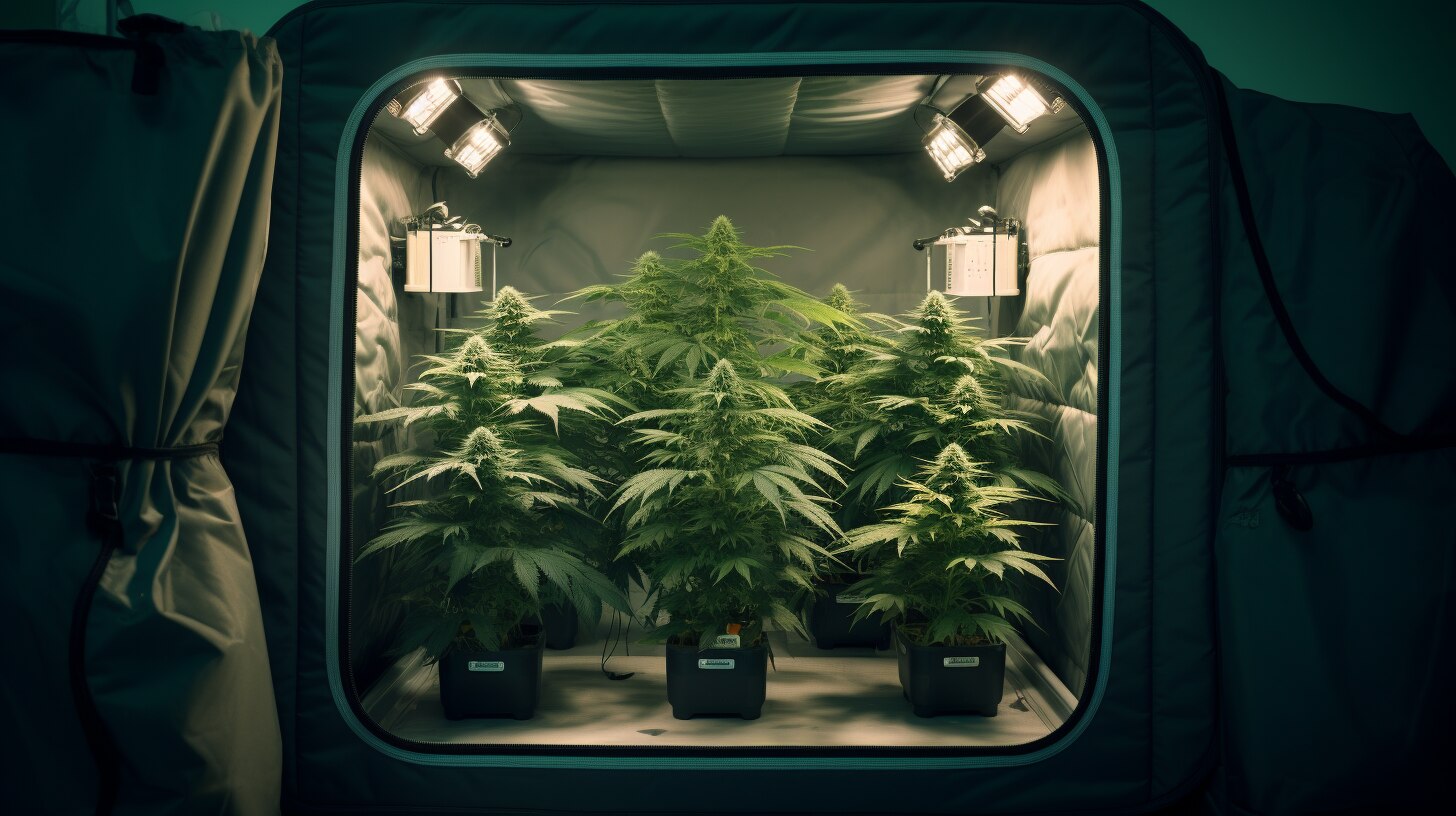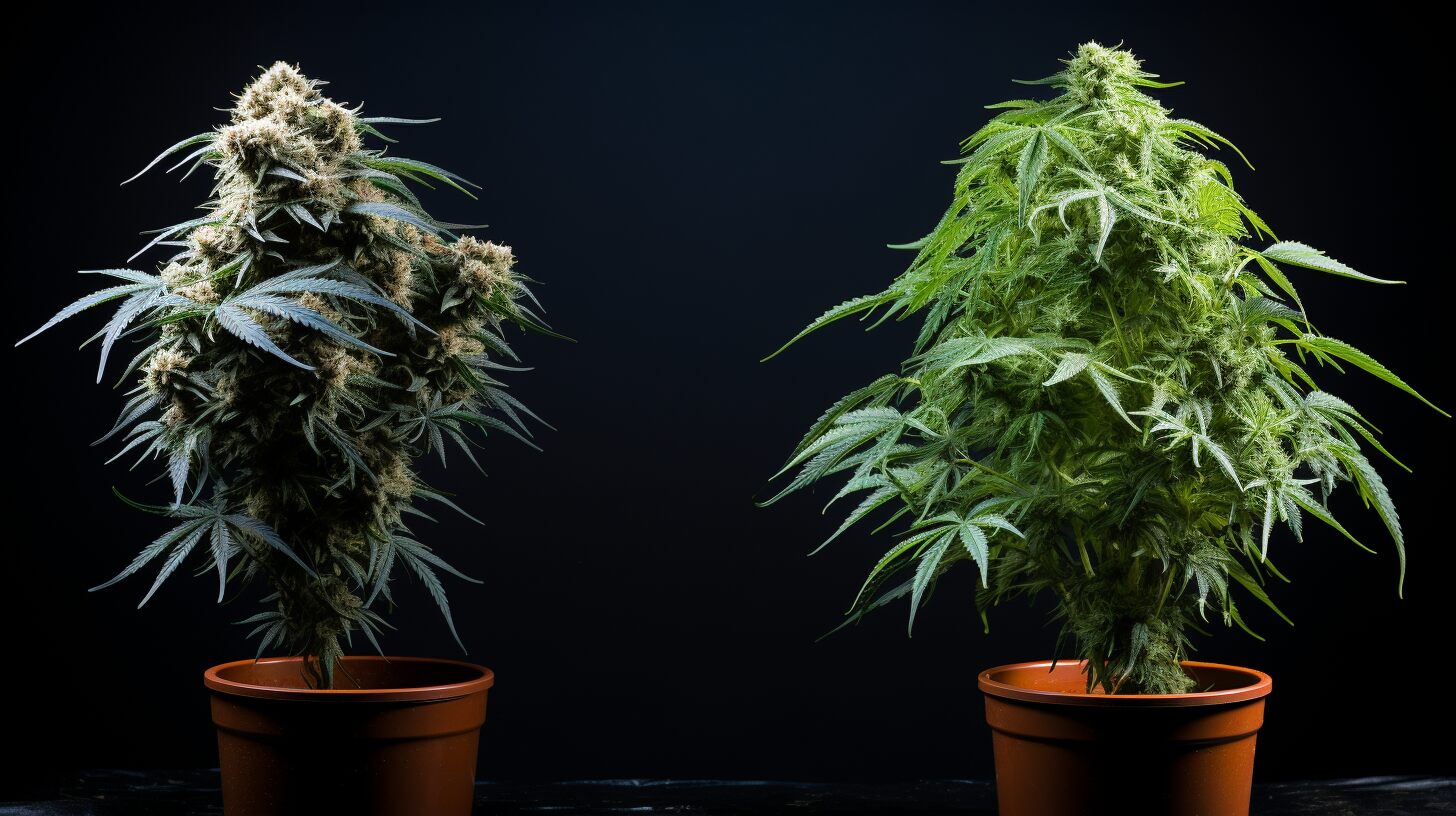Que sont les graines à autofloraison
Les variétés à autofloraison ont parcouru un long chemin depuis leur apparition sur le marché au début des années 2000. À l’époque, elles n’étaient pas très puissantes et manquaient d’arôme et de rendement. Cependant, ces dernières années, les variétés à autofloraison ont progressé pour rivaliser avec les variétés féminisées à photopériode en termes de puissance, de rendement et d’arôme.
Non seulement les autofloraisons modernes sont idéales pour les utilisateurs récréatifs en raison de leur riche teneur en THC, mais elles sont également idéales pour les utilisateurs holistiques grâce à leur composition faible en THC et riche en CBD, offrant des effets non psychoactifs sans autant de psychoactivité.
Comment sont créées les plantes à autofloraison ?
Les variétés à autofloraison constituent un développement relativement nouveau dans le monde du cannabis. Ils sont créés en croisant des graines indica ou sativa avec des ruderalis, ce qui donne des plantes de cannabis qui fleurissent en fonction de l'âge au lieu de dépendre des heures de clarté.
La plante ruderalis utilisée dans ce processus est un sous-type sauvage qui a tendance à être petit avec des rendements assez faibles, mais qui possède la capacité de fleurir de manière indépendante grâce à son adaptation à des régions comme l'Europe du Nord et la Sibérie où les étés peuvent être courts mais comportent de nombreux heures d'ensoleillement.
Qui utilise des variétés de cannabis automatiques et pourquoi ?
Les variétés de cannabis automatiques attirent de plus en plus l'attention en raison de leur commodité et de leur facilité d'utilisation. Les cultivateurs expérimentés les apprécient car elles sont rapides à récolter avec des rendements décents et parfaites pour la culture dans des espaces limités et la culture guérilla en extérieur. Outre la commodité qu'elles apportent, elles offrent également aux fumeurs une excellente expérience récréative avec la bonne variété offrant des effets doux mais équilibrés.
Les fumeurs trouvent facile de sélectionner une autofloraison qui répond à leurs besoins, car de nombreuses variétés fleurissent, des variétés Indica aux Sativas en passant par les hybrides. Que les utilisateurs recherchent un effet relaxant ou édifiant, ces autofloraisons offriront certainement quelque chose d'unique et d'agréable.
Avec différents niveaux de THC, les utilisateurs peuvent obtenir exactement l'intensité ou la relaxation qu'ils désirent en fonction de la variété de variété qu'ils choisissent. La période de floraison rapide et la robustesse offertes par les variétés automatiques les rendent particulièrement attrayantes tant pour les producteurs que pour les fumeurs.
Comment cultiver des graines à autofloraison
Se lancer dans l’aventure de la culture de graines de cannabis à autofloraison peut être une expérience passionnante et enrichissante. Découvrez les caractéristiques uniques de ces plantes et apprenez des techniques de culture sur mesure pour maximiser le rendement et la puissance de votre jardin à autofloraison.
Intérieur vs extérieur
L’intérieur est un excellent moyen de cultiver du cannabis si vous manquez d’espace ou si vous souhaitez un contrôle total sur votre environnement. L'avantage de la culture en intérieur est que vous pouvez maintenir vos plantes sous un programme d'éclairage de 18/6 (18 heures de lumière, 6 heures d'obscurité) ou 24/0, de la graine à la récolte, ce qui signifie qu'il n'est pas nécessaire de passer aux lumières de floraison et de gérer les problèmes. une chronologie de photopériode complexe comme pour le cannabis à photopériode.
Cela donne au producteur plus de flexibilité et entraîne des délais d'exécution plus rapides, car la période de croissance peut être réduite de plusieurs semaines par rapport aux photopériodes.
L'extérieur est la manière la plus traditionnelle de cultiver du cannabis, même si elle nécessite un peu plus de savoir-faire en ce qui concerne la météo et le passage des saisons. En extérieur, vous devez gérer et vous adapter aux variations telles que la pluie, le vent, l'humidité et la température, et donc plus de préparation peut être nécessaire que pour une culture en intérieur.
Cela dit, vous n'êtes pas aussi redevable aux saisons naturelles qu'avec les plantes à photopériode - vous pouvez planter vos autos à tout moment de l'année tant qu'il n'y a pas de gel. Vos récoltes arriveront également généralement 8 à 10 semaines après la plantation, ce qui vous donnera accès à des rotations plus rapides et à des récoltes multiples.
De combien de temps avez-vous besoin pour cultiver des graines à autofloraison ?
Les graines de cannabis à autofloraison gagnent en popularité en raison de leurs cycles de croissance rapides et de leurs rendements élevés. Ces variétés sont beaucoup plus faciles à cultiver que les plantes de cannabis traditionnelles et nécessitent moins de temps et d'efforts. En moyenne, les plantes à autofloraison seront prêtes à être récoltées seulement 10 semaines après le processus de germination.
Certaines variétés peuvent même être prêtes à être récoltées dès 8 semaines après la plantation des graines de marijuana. Cela en fait une excellente option pour les cultivateurs débutants qui n’ont pas beaucoup d’expérience dans la culture de leur fleur de cannabis.
Pouvez-vous cultiver des photopériodes féminisées et des autofloraisons dans la même salle de culture ?
Oui, il est possible de cultiver du cannabis féminisé à photopériode et à autofloraison dans la même salle de culture. Cependant, ce n’est généralement pas la manière optimale de les cultiver ensemble. Un problème majeur est que les deux variétés ont des tailles différentes.
Les plantes à autofloraison ont tendance à être nettement plus petites que les plantes à photopériode, ce qui signifie que vous aurez besoin de plus d'espace pour les plantes les plus hautes, ou que vous devrez peut-être gérer leur croissance de plus près. Un autre problème potentiel lors de leur culture ensemble est la gestion du cycle de la lumière.
La plupart des variétés à autofloraison nécessitent 18 à 20 heures de lumière chaque jour pour une croissance et des rendements optimaux, tandis que les plantes à photopériode ont besoin de 12 heures de lumière suivies de 12 heures d'obscurité au moment de la floraison. Changer vos lumières de 18/6 à 12/12 signifie que vos automobiles recevront moins que leur quantité de lumière recommandée, ce qui entraînera des rendements plus faibles.
Température et humidité optimales pour la culture des autofloraisons
Les températures optimales pour la culture des autofloraisons sont un facteur important si vous voulez vous assurer que vos plantes sont saines. Les plantes à autofloraison sont particulièrement sensibles aux températures extrêmes, la température idéale pour leur croissance est donc de 70°F (21°C) pour une bonne température ambiante.
Si la température de votre salle de culture devient trop froide ou trop chaude, cela peut entraîner une diminution du rendement et une mauvaise croissance. Pour éviter tout problème de température, il convient de disposer d’une configuration de salle de culture permettant un contrôle total de l’environnement. Cela implique de disposer d'un système de ventilation de qualité et également d'utiliser des systèmes de chauffage/refroidissement si nécessaire.
De quels types de nutriments les autofloraisons ont-elles besoin ?
Les autofloraisons sont un type de plante de cannabis qui produit des têtes sans avoir besoin de cycles de lumière réguliers comme le marijuana à photopériode traditionnelle. Les plantes à autofloraison restent généralement petites, elles n’ont donc pas besoin d’autant de nutriments que les plantes plus grandes. La clé d’une autofloraison réussie est de s’assurer de donner à votre plante juste la bonne quantité de nutriments et de ne pas la suralimenter.
En ce qui concerne les engrais pour les plantes à autofloraison, vous devez utiliser moins que la dose recommandée lorsque vous utilisez des nutriments commerciaux pour le cannabis. Par exemple, au lieu de la dose complète recommandée, utilisez-en seulement ½ ou ¼ pour vous assurer que votre plante a tout ce dont elle a besoin tout en évitant de donner trop de nutriments qui pourraient causer des dommages.
Si vous utilisez un terreau pré-fertilisé, vous n'aurez peut-être pas besoin de nourrir vos plantes à autofloraison avant 3 ou 4 semaines, lorsqu'elles commenceront à fleurir. De cette façon, vous pouvez vous assurer que vos plantes reçoivent juste assez de nourriture pour les aider à prospérer et à fleurir sainement.
Quel type d’eau pour les autofloraisons ?
Les variétés à autofloraison sont plus petites que leurs prédécesseurs féminisés à photopériode et nécessitent donc moins d’eau pour prospérer. Pour garantir le succès de votre culture à autofloraison, laissez le sol sécher entre les arrosages. Cela décourage la pourriture des racines, les problèmes fongiques et la sursaturation des nutriments. Les plantes à autofloraison ne doivent pas non plus être trop arrosées, car cela peut causer du stress à la plante et entraîner de mauvais rendements.
Lors de l’arrosage des plantes à autofloraison avec une solution nutritive, il est important d’ajuster le niveau de pH de la solution. De manière générale, le niveau de pH optimal pour les cultures à autofloraison est de 6 à 7 lorsqu'elles sont cultivées dans des systèmes basés sur le sol.
Il existe plusieurs produits comme le pH naturel « en hausse » ou « en baisse » qui peuvent vous aider à amener votre solution eau/nutriments à un niveau équilibré pour une croissance et une santé optimales pour votre culture à autofloraison. La bonne combinaison de quantité et de qualité d’eau contribuera à garantir que vos autofloraisons se développent de manière optimale et produisent des récoltes abondantes et de haute qualité.
Qu’en est-il du palissage des plantes avec du cannabis à autofloraison ?
Les plantes de cannabis à autofloraison peuvent être une option intéressante pour les cultivateurs en extérieur qui souhaitent éviter les tracas liés au contrôle des cycles de lumière associés aux variétés à photopériode.
Malheureusement, certaines techniques traditionnelles de palissage des plantes ne conviennent pas aux autofloraisons car elles peuvent provoquer un ralentissement temporaire de la croissance, voire un arrêt complet, en raison de la durée de vie limitée de ces variétés populaires. Les techniques telles que l'étêtage, le FIM, le super cropping et la défoliation doivent être évitées car elles auront un effet dramatique sur vos rendements.
Le palissage à faible stress (LST) est la meilleure méthode à privilégier pour le palissage des autofloraisons. Cette technique n’implique aucune coupe ni pincement, il n’y a donc aucun risque de retard de croissance. Le LST consiste simplement à plier les tiges et les branches pour créer une canopée uniforme qui optimise l’exposition à la lumière.
Cette approche fait toujours des merveilles dans la mesure où elle permet de créer des rendements élevés sans risquer beaucoup de dommages à la plante elle-même, mais elle doit être appliquée avec précaution au fil du temps pour obtenir de bons résultats sans ralentir le taux de croissance de la plante.
Avantages et inconvénients des graines à autofloraison
Les graines à autofloraison ont révolutionné le monde de la culture du cannabis, offrant toute une série d'avantages et d'inconvénients aux cultivateurs débutants.
Avantages des graines de cannabis à autofloraison
Les graines de marijuana à autofloraison offrent de nombreux avantages qui en font un choix attrayant pour les cultivateurs en intérieur. Pour commencer, les plantes à autofloraison nécessitent moins d’entretien que les plantes ordinaires et peuvent atteindre le moment de la récolte en aussi peu que 8 à 10 semaines, ce qui les rend idéales pour ceux qui disposent d’un espace ou de temps limité.
Les plantes à autofloraison ont également tendance à être plus résistantes que les variétés traditionnelles et sont mieux à même de résister aux fluctuations de température, à la pression des maladies et aux ravageurs. De plus, les variétés à autofloraison produisent souvent des niveaux de THC plus élevés que les autres variétés, ce qui en fait un excellent choix pour ceux qui cherchent à maximiser leur puissance.
Enfin, les plantes à autofloraison sont généralement plus petites et plus compactes que les plantes de cannabis traditionnelles, ce qui signifie qu'elles prennent moins de place dans la salle de culture ou dans le jardin. Dans l’ensemble, ceux qui choisissent de cultiver des variétés à autofloraison peuvent bénéficier d’un délai d’exécution rapide et d’une récolte abondante avec un minimum d’effort.
Inconvénients des graines de marijuana à autofloraison
Malgré les nombreux avantages des graines de cannabis à autofloraison, il existe quelques inconvénients à prendre en compte avant de les planter. Les variétés à autofloraison ont tendance à être moins puissantes que les variétés traditionnelles, avec des niveaux de THC et de CBD plus faibles dans le produit final.
De plus, les plantes à autofloraison sont plus petites que les variétés traditionnelles, ce qui signifie que les rendements peuvent ne pas être aussi importants pour ceux qui espèrent une grosse récolte. De plus, comme les plantes à autofloraison ont un cycle de vie court et nécessitent un entretien minimal, certains cultivateurs trouvent qu'elles n'ont pas la complexité et le défi de la culture de plantes de cannabis ordinaires.
Enfin, même si elles sont généralement plus résistantes aux stress environnementaux tels que les fluctuations de température et la pression des maladies, les variétés à autofloraison peuvent toujours être sensibles aux parasites et à d'autres problèmes qui peuvent nécessiter une attention supplémentaire.
Conclusion
La récolte du cannabis à autofloraison est relativement simple. Lorsque les têtes semblent prêtes, vous pouvez commencer la récolte. Il est important de noter qu’il est préférable de récolter tôt le matin, lorsque les trichomes sont les plus visibles et à leur puissance maximale.
Une fois récoltées, suspendez vos plantes la tête en bas pendant quelques jours pour les faire sécher. Ensuite, après séchage, vous pouvez conserver vos têtes dans des récipients hermétiques jusqu'à 6 mois pour une préservation maximale du goût et de la puissance. Avec les soins et l’entretien appropriés, vous devriez avoir un excellent rendement de cannabis à autofloraison !


 English
English 


